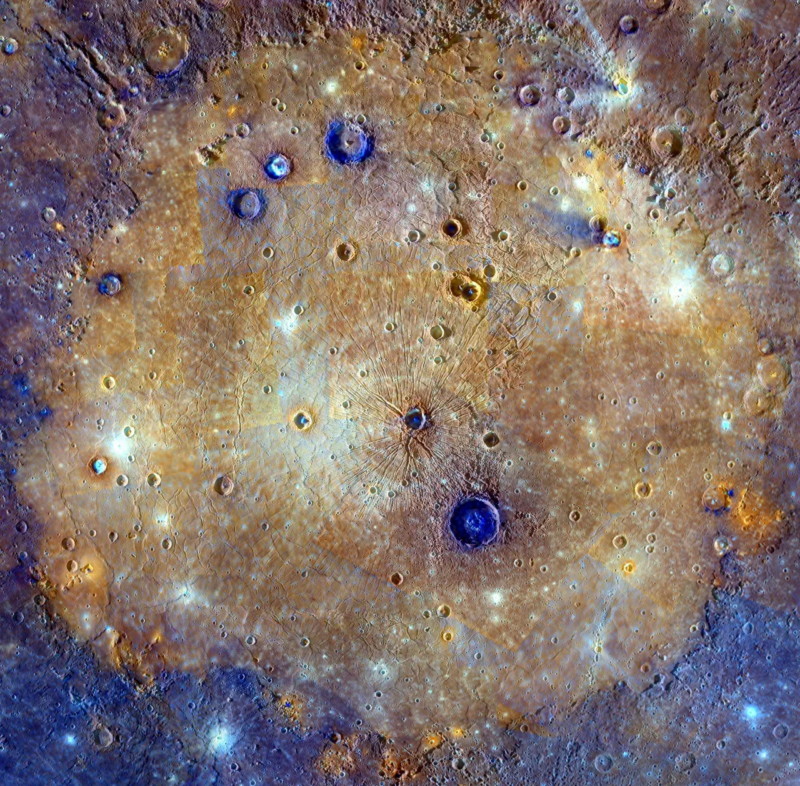
The planet Mercury may be hot, but it appears to be cooling down. That's the conclusion of a new study that looked for the kinds of features on Mercury that can form as the surfaces of planets contract due to cooling. These vertical faults, called "graben," are not only common across the planet's surface but appear to have formed within the last few hundred million years—and possibly much more recently.
All of which suggests that the stresses caused by a cooling planet are still playing out on the Solar System's smallest non-dwarf planet.
Crunch time
The process of building a planet necessarily generates a lot of heat as impactors of various sizes deliver both matter and energy to the growing planet. The radioactive elements they deliver can also heat the planet's interior. For the rocky planets of our Solar System, this heat means a differentiated interior, with layers of lighter rocks on top of a liquid core.
Over time, however, that heat escapes to space, allowing the interior of planets to gradually cool. Since smaller planets have less hot material compared to their surface area, this cooling happens most quickly on Mars and Mercury.
The cooling can have significant impacts on the planet. Once things cool sufficiently, it means an end to liquid cores and the loss of any magnetic fields generated through their rotation. As the rocks above the core cool, they also solidify, shutting down processes like volcanism and the plate tectonics seen on Earth.
That doesn't mean the end of all tectonic activity, though, as the cooling itself can generate other stresses that can reshape the surface of planets. Most materials shrink as they cool, becoming more dense. Since planets cool from the outside in, the crusts are already compressed and compact by the time the interior cools. As the planet's interior cools, its compaction will gradually pull the support out from under the crust.
This creates a tremendous amount of stress on the solid crust, which responds the only way it can: by breaking. some blocks of crust will follow the contracting core downwards. This forces neighboring blocks of crust upward, since there isn't enough space for all the material to drop. The result is a graben, named for the German word for a ditch.
Lots of graben
Grabens were first identified on Earth, where the interior remains warm, and they typically form where the crust has been stretched to the point of breaking. But they have since been identified on various other bodies in the Solar System. The new work, done by a small European team, conducted a comprehensive search for graben in images of Mercury taken by the MESSENGER spacecraft, which ended its mission to the planet eight years ago.
Using the extensive image archive created by MESSENGER, the researchers picked out terrain that shows signs of having been compressed by stresses generated by Mercury's compaction, and then examined this terrain by eye. Within these areas, the researchers identified 727 likely graben, with high confidence in around 200 of them. Once identified, the researchers used shadows to try to estimate the graben's depth in cases where the imaging angle allowed for this.
The mere fact that these ditches haven't been filled in by the processes active on the surface of Mercury (primarily impacts and the formation and spread of regolith) suggests that the graben are fairly young. And the widespread nature of them indicates that tectonic activity is widespread on the planet. The majority of graben seen here are within a large impact crater called the Caloris Basin, where the thinned crust may be more prone to faulting.
Overall, most of the graben were less than 50 meters deep. But a fair number were between 50 and 100 meters deep, and at least 20 were over 100 meters deep. If these were old structures, they simply would not be this deep. Based on a relationship between graben length and depth as seen on the Earth and Moon, the authors estimate that most of the graben are less than 200 million years old and possibly quite a bit younger.
That would mean the cooling of Mercury is likely an ongoing process, one that is still triggering tectonic activity. While we're unlikely to get a lander there any time soon to confirm this, we will get a new view of Mercury starting in 2025, when the ESA's BepiColombo spacecraft goes into orbit.
Nature Geoscience, 2023. DOI: 10.1038/s41561-023-01281-5 (About DOIs).



3175x175(CURRENT).thumb.jpg.b05acc060982b36f5891ba728e6d953c.jpg)

Recommended Comments
Join the conversation
You can post now and register later. If you have an account, sign in now to post with your account.
Note: Your post will require moderator approval before it will be visible.